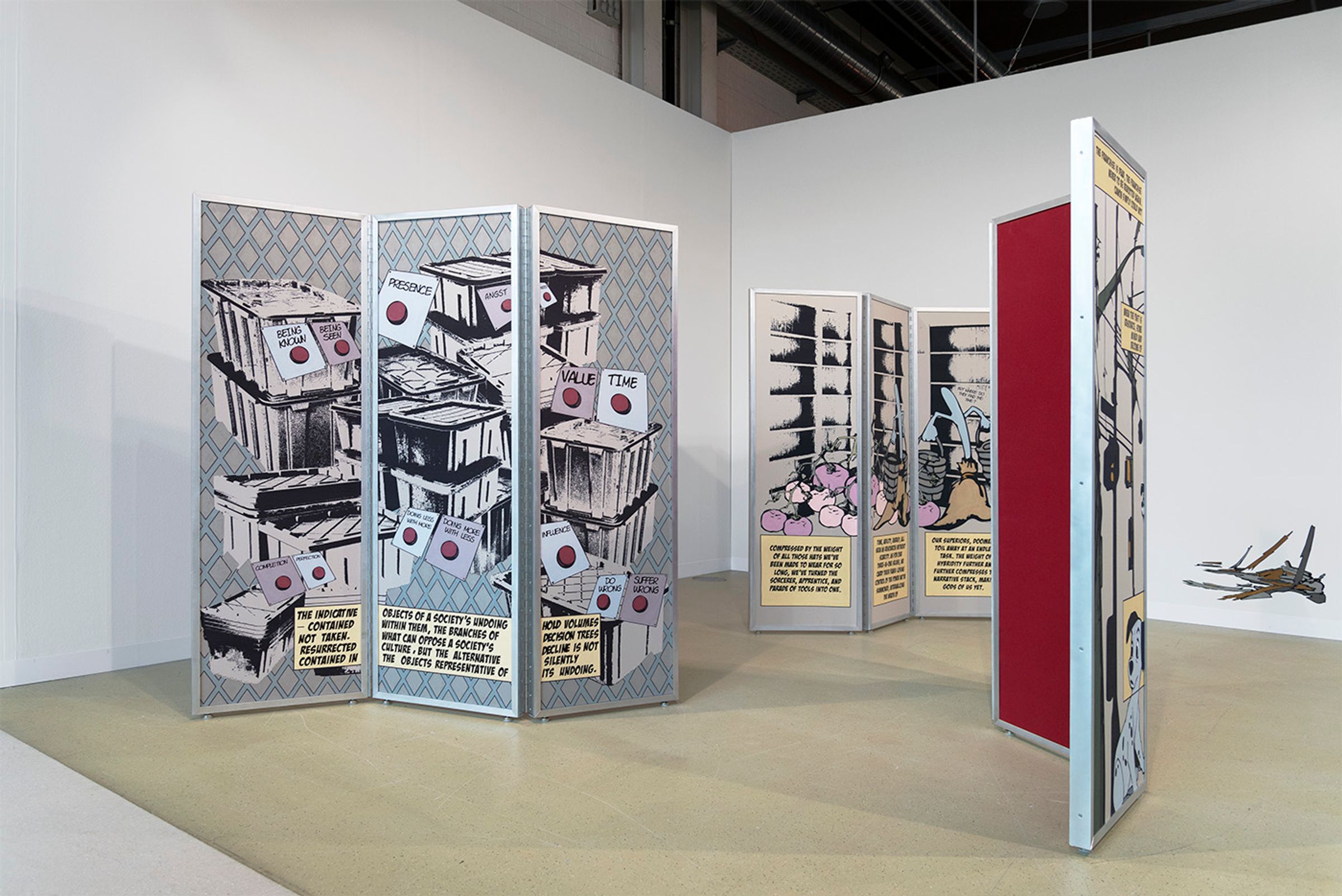2021
Paravents
Presented at Art Basel Statements
Basel, Switzerland, 2021
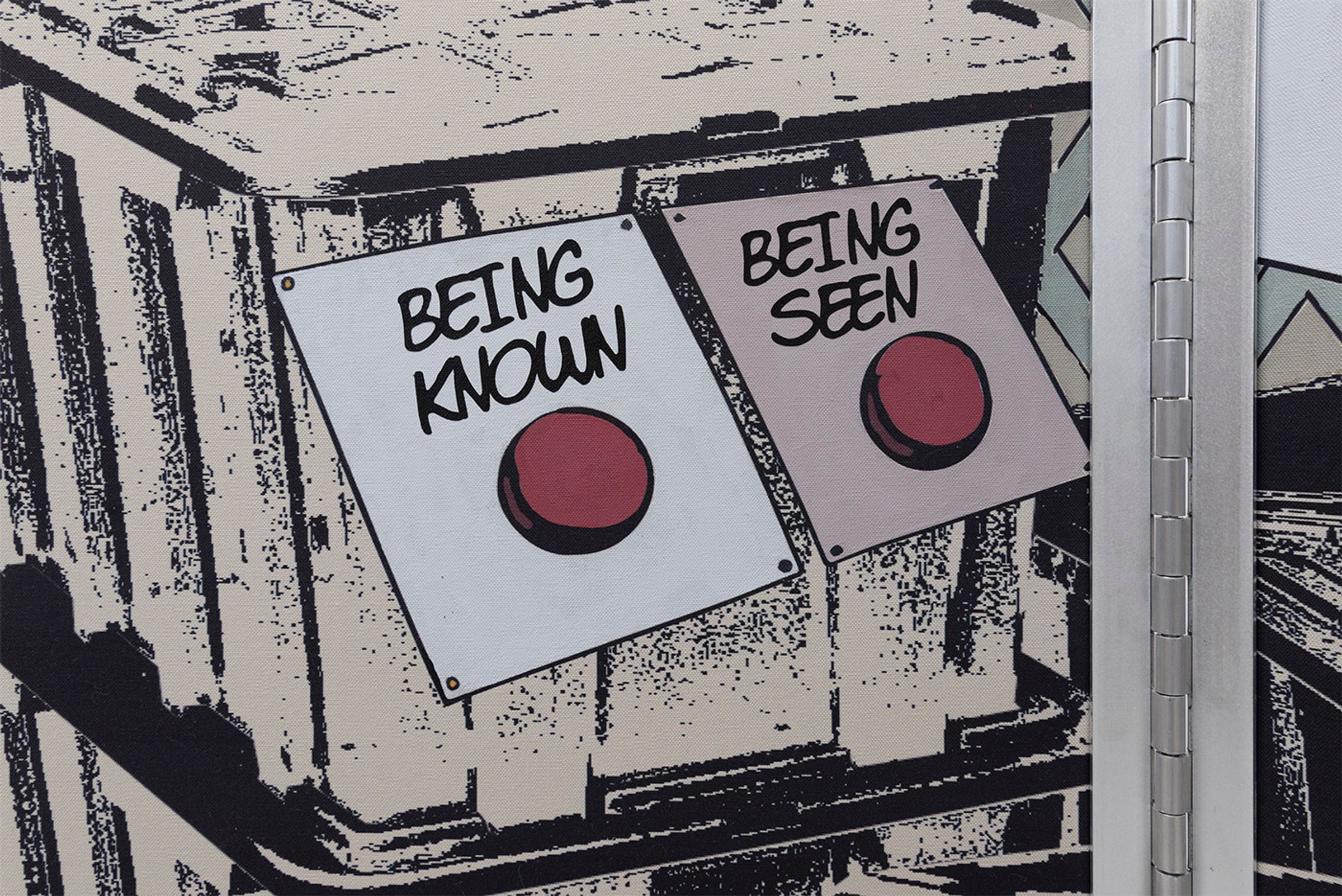

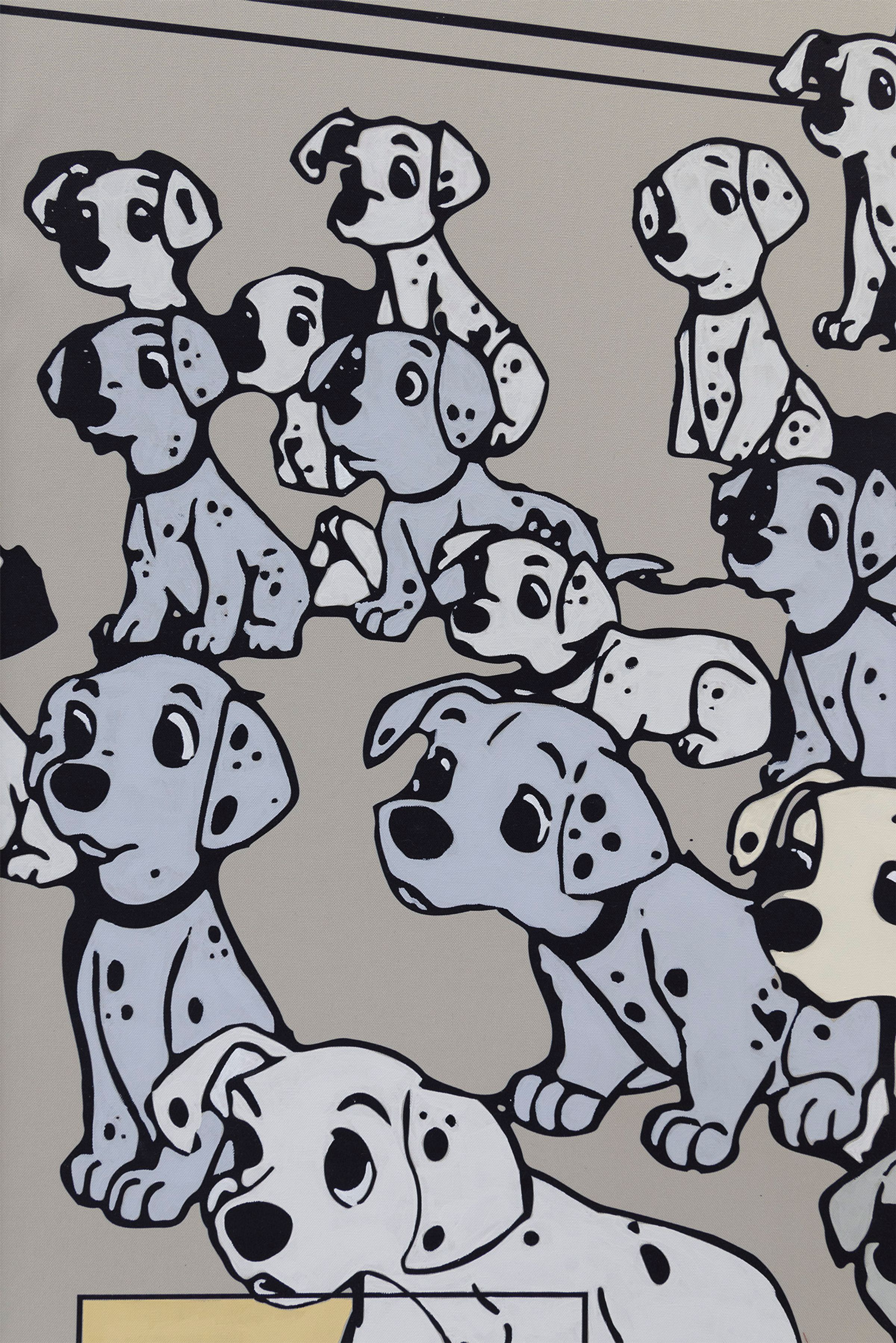
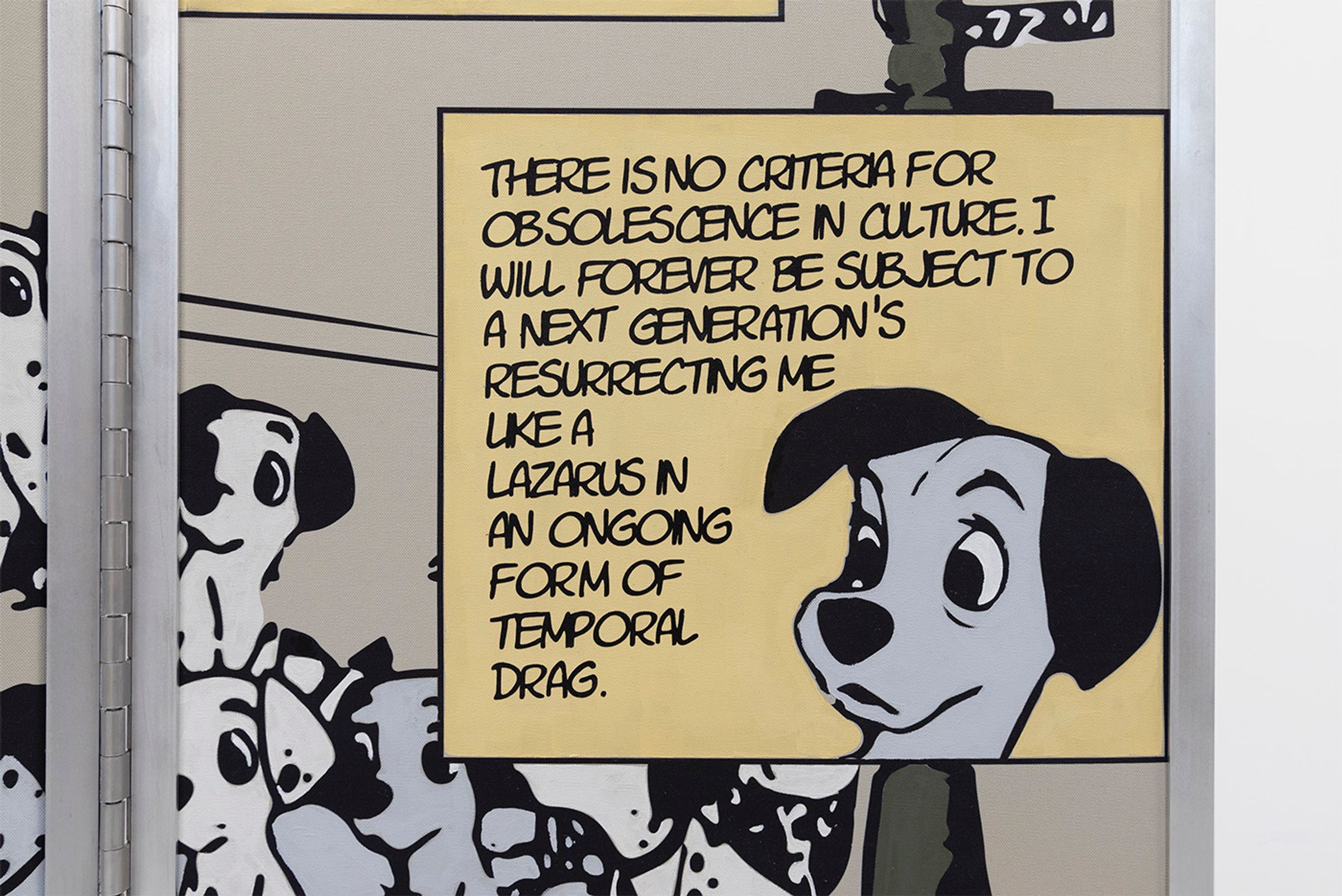
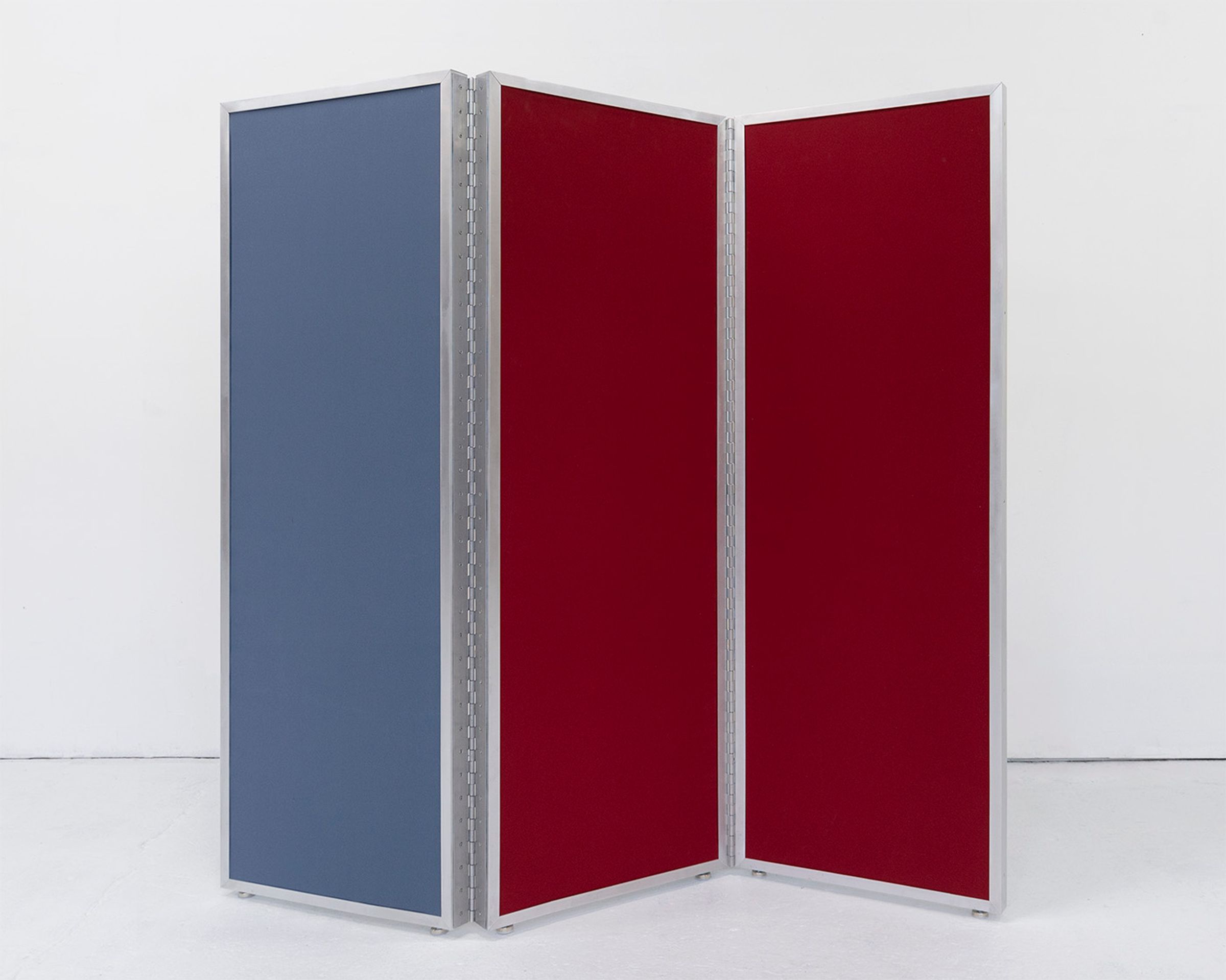
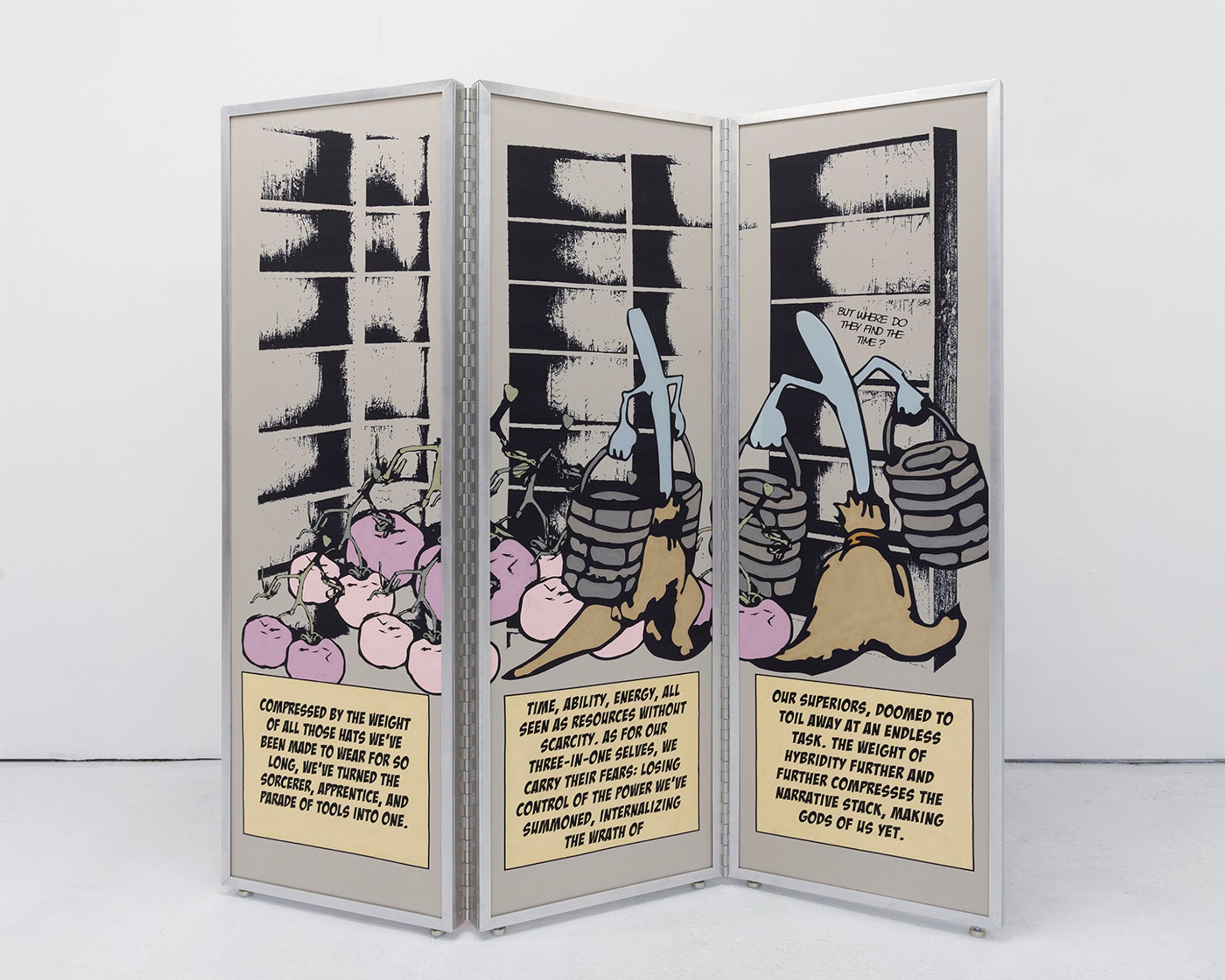
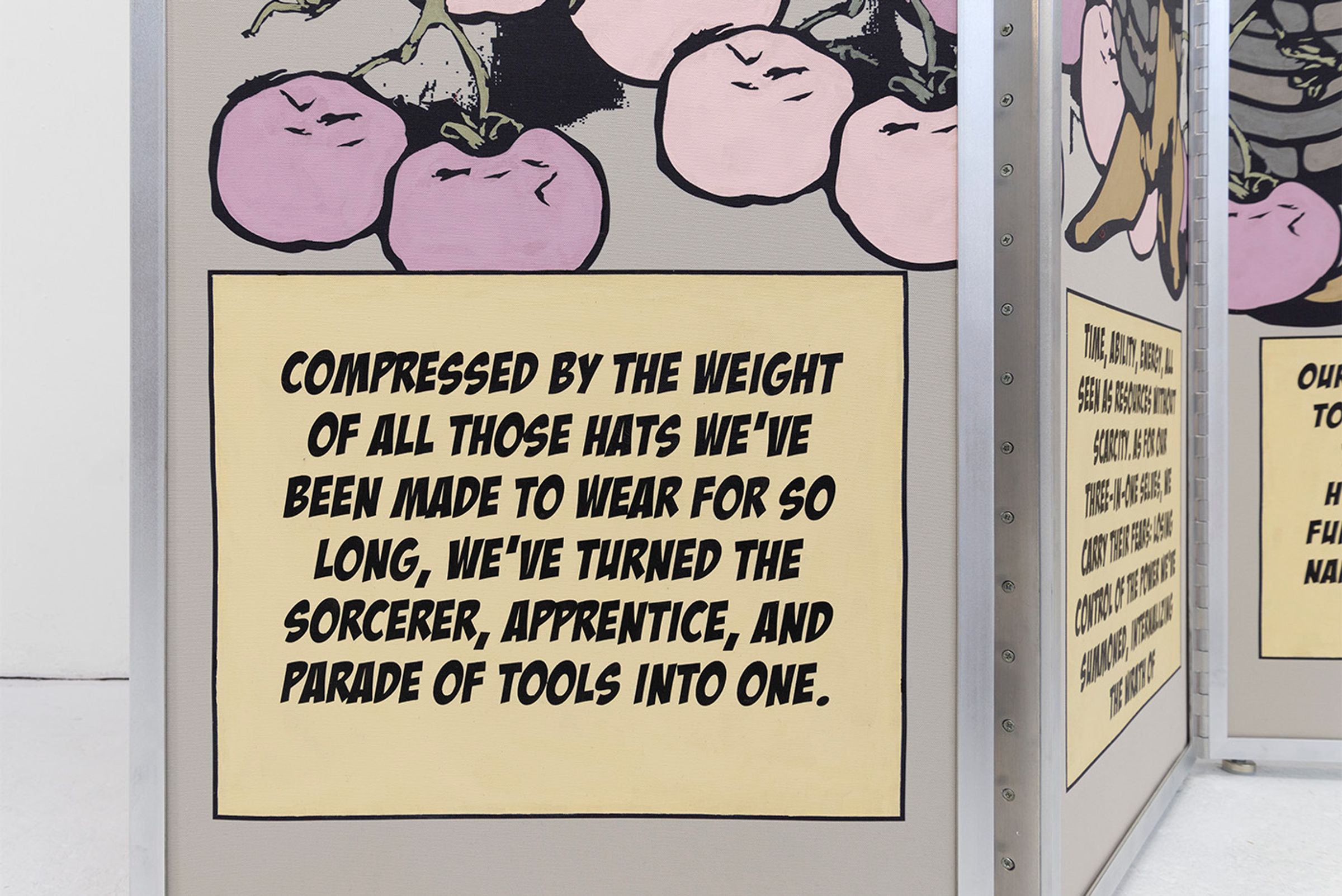
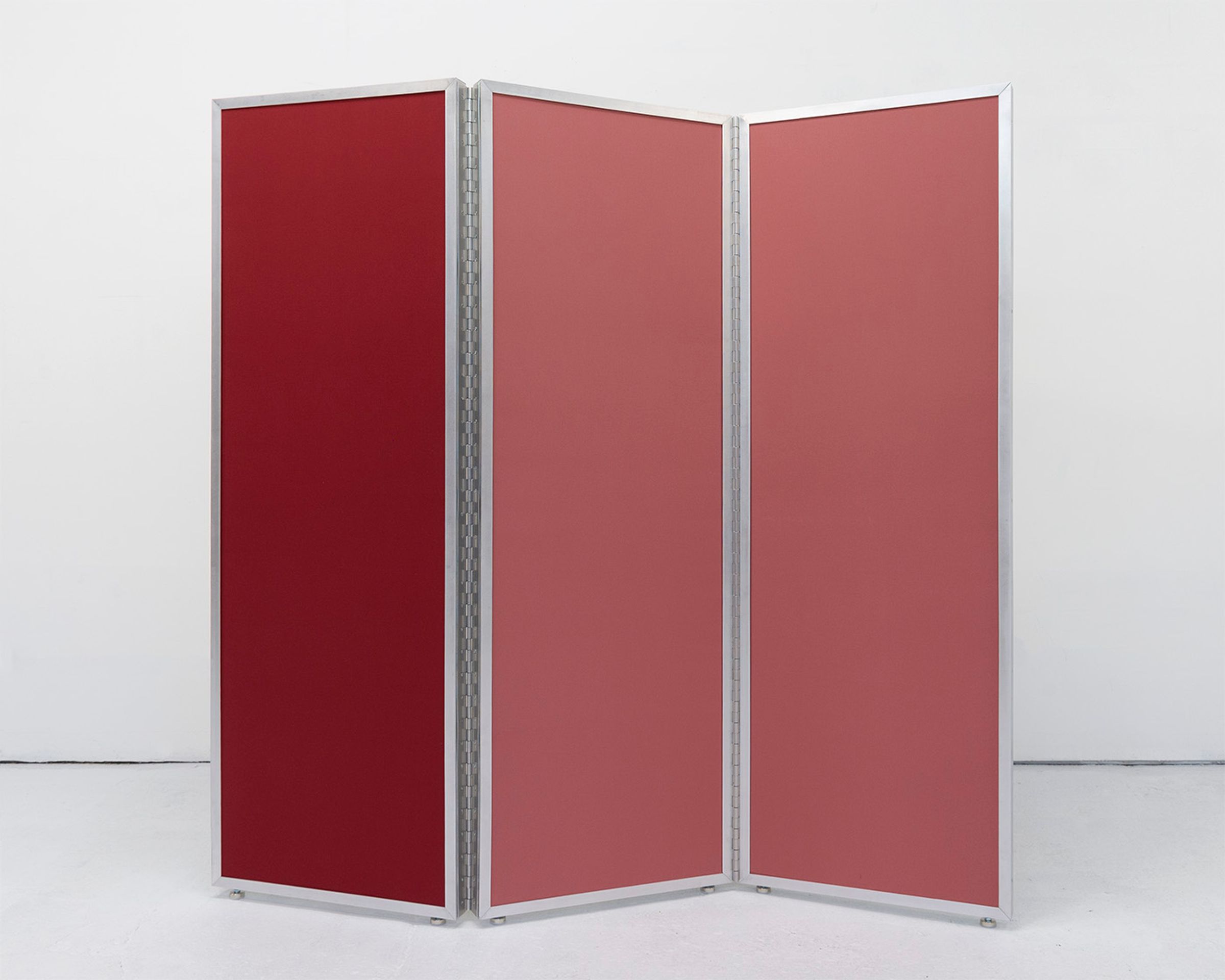
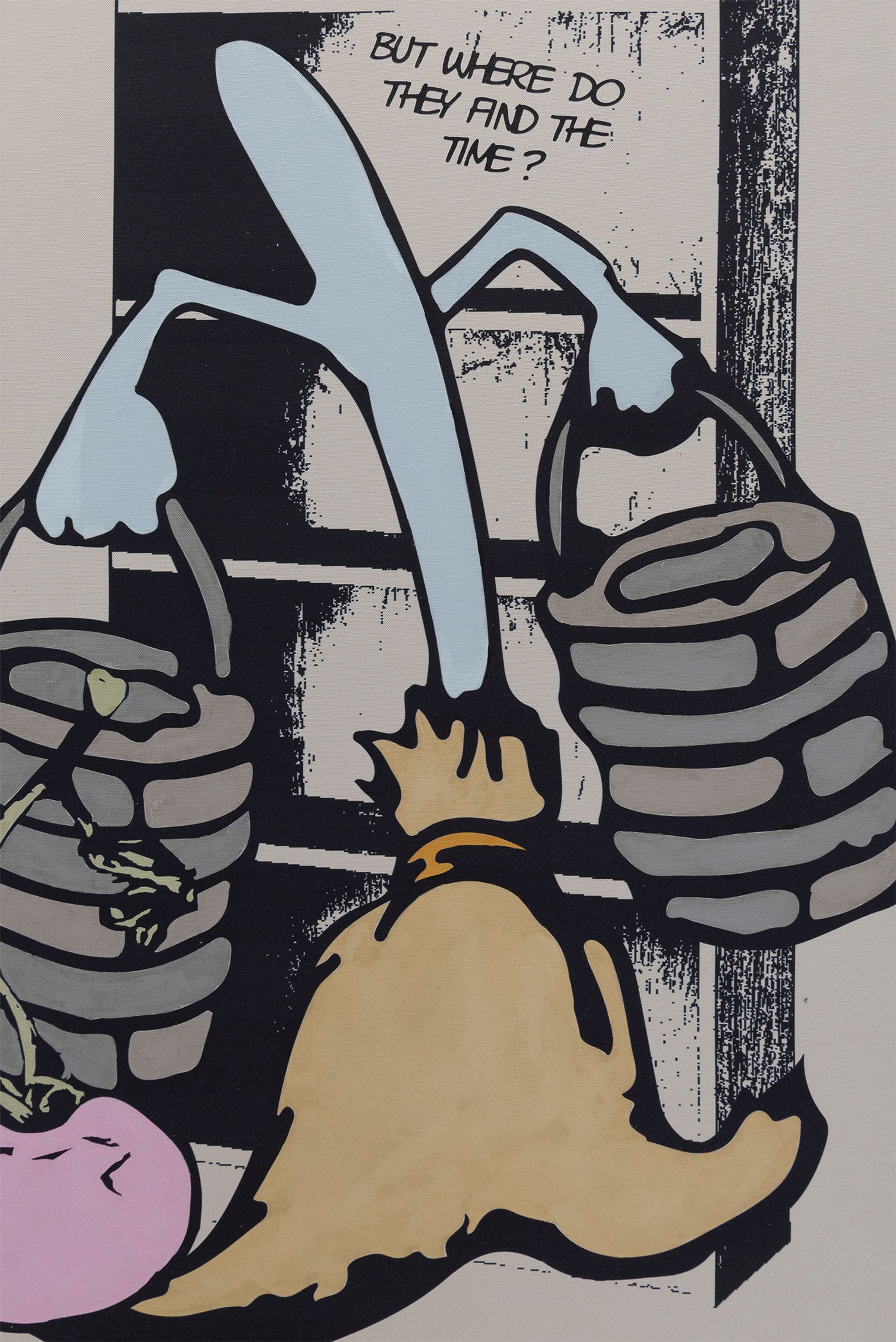
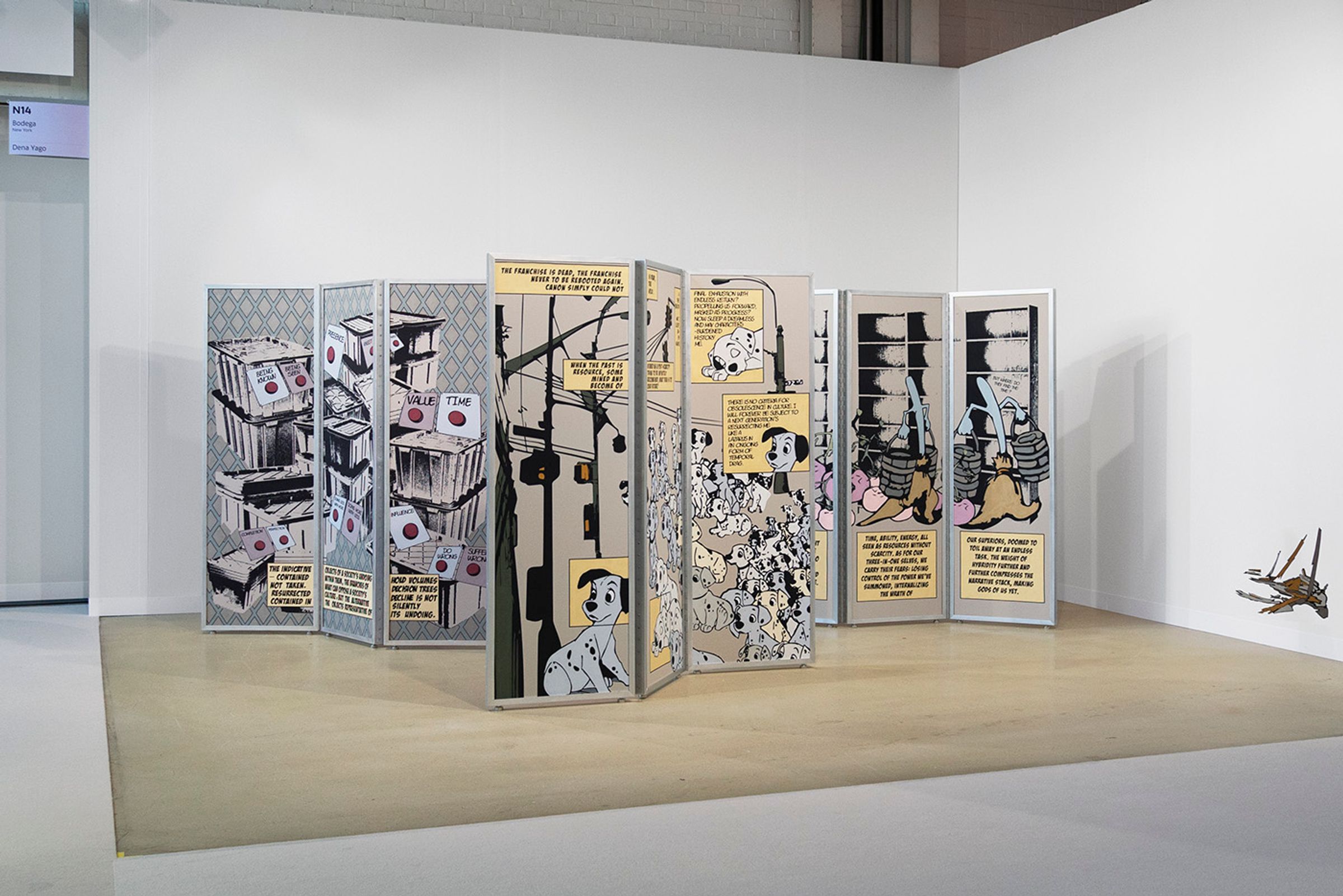

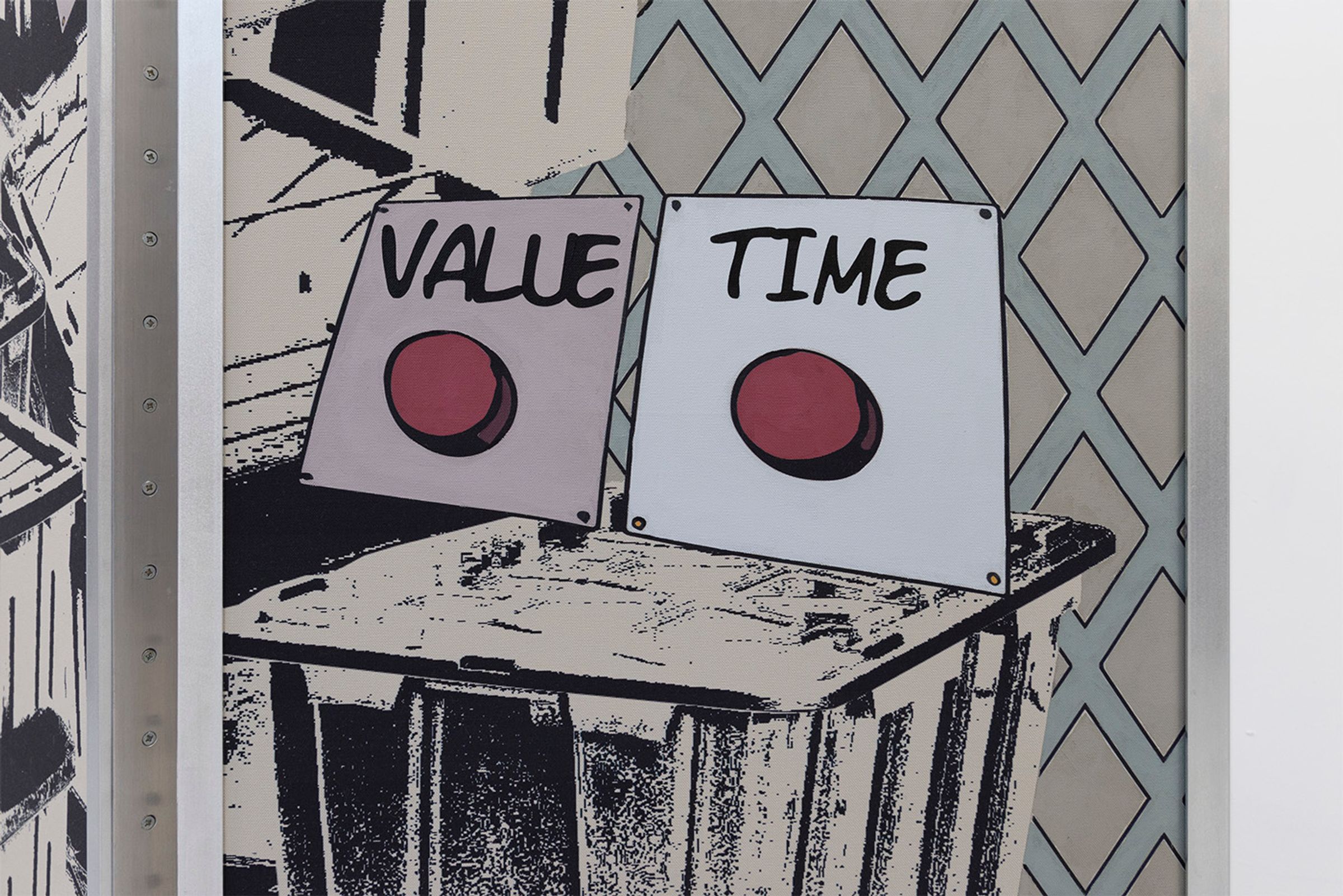
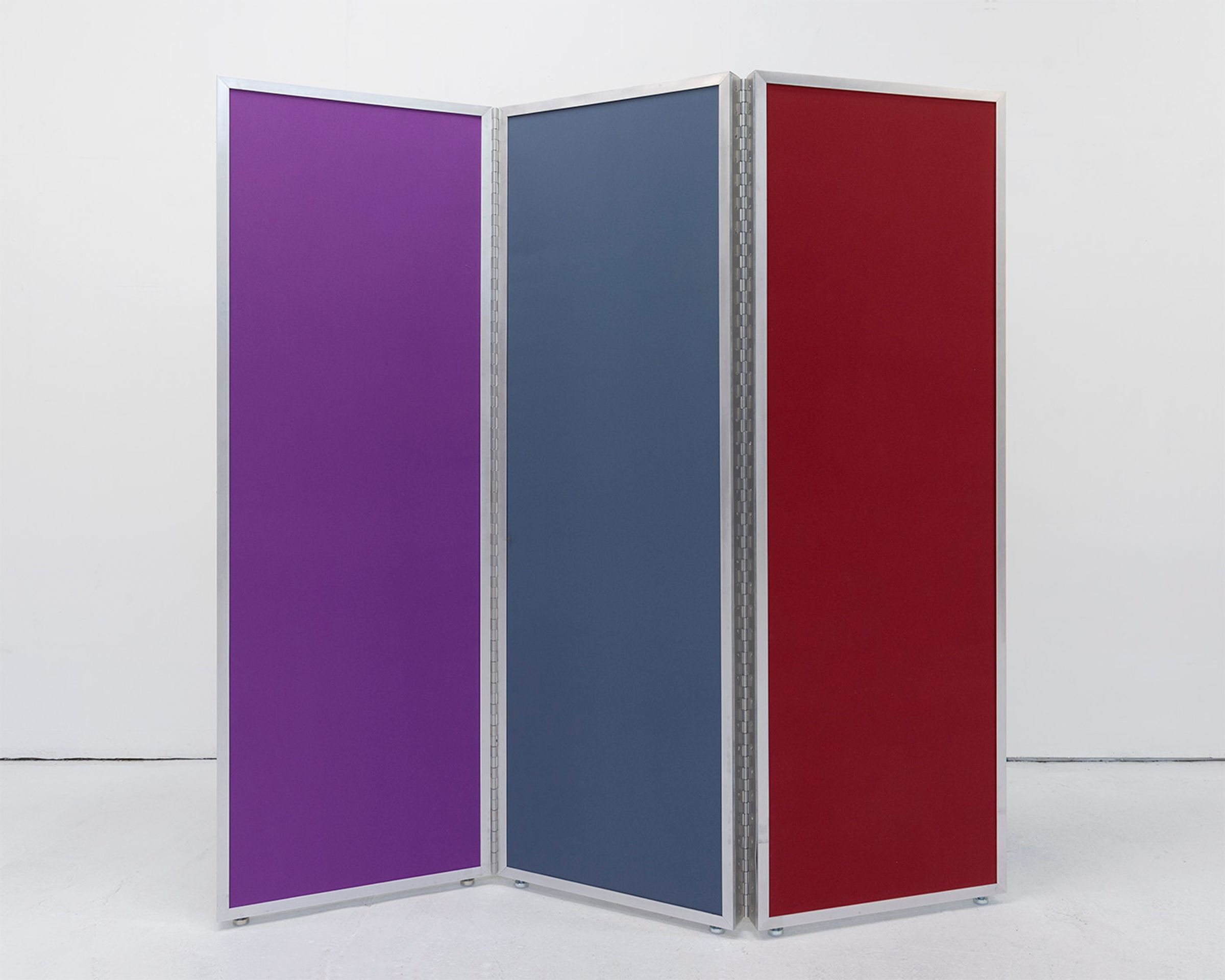
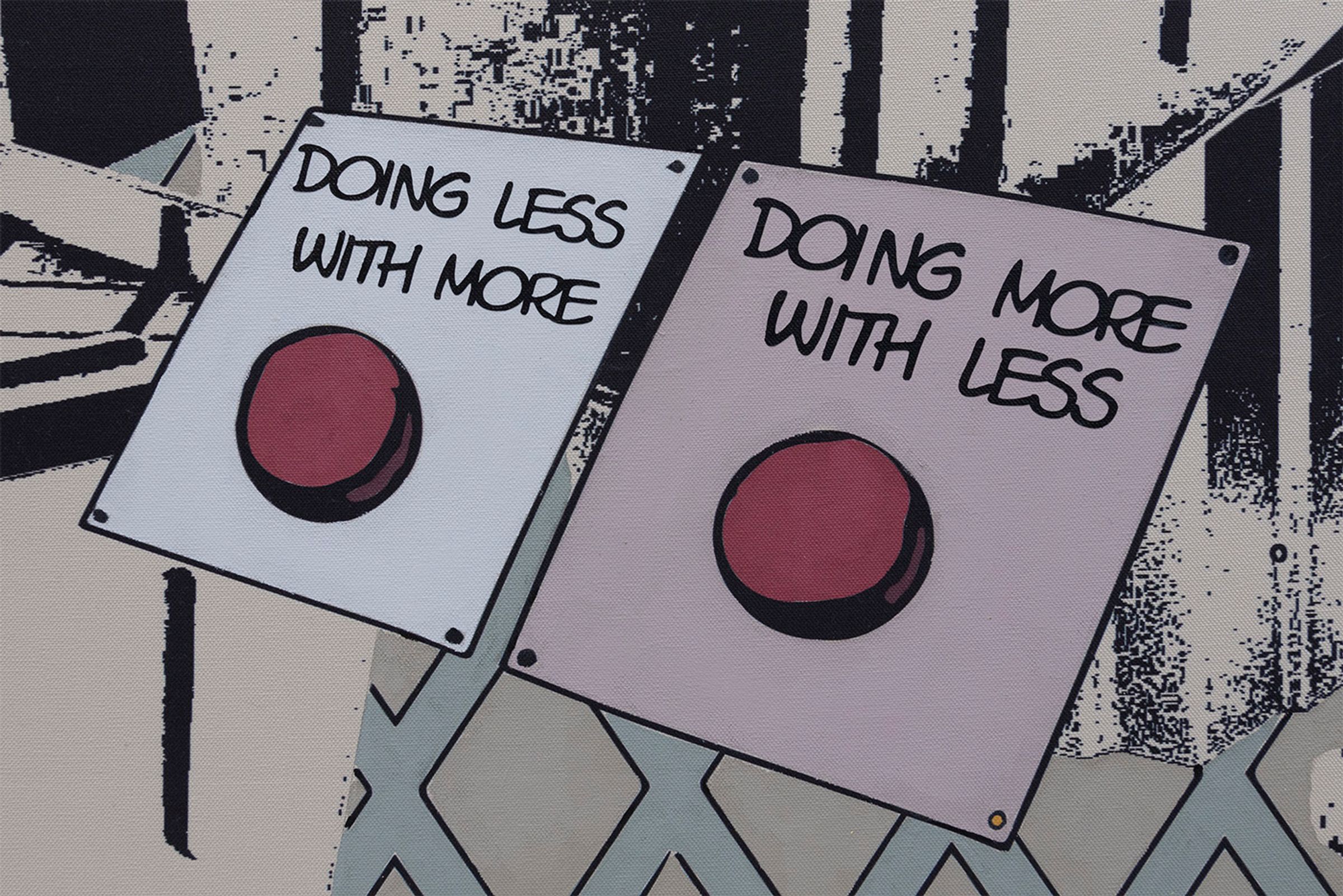
The presentation consists primarily of three painted dressing screens which divide and move viewers through the space. Similar to Yago’s wall paintings, each dressing screen is an allegorical exploration of emergent issues in contemporary culture—something akin to a visual essay.
In one painted screen, a group of puppies from the 1961 Disney film 101 Dalmatians is gathered on what appears as an urban street corner, with power lines and street signs overhead. The image is divided by the panels of the painted screen, creating a visual composition similar to the page of a comic book. Through a text box, an unseen speaker informs the Dalmatians that “the franchise is dead,” eliminating the possibility of the resurrection of these characters through another reboot or adaptation. One puppy receives this news with relief, sinking into sleep, while another looks alarmed, realizing that her existence depends on the whims of future audiences.
In another work, images of stacked Amazon delivery bins are overlaid with cartoonish buttons presenting false equivalencies and dichotomies, such as Completion and Perfection or Value and Time. The narratorial text box riffs on Adorno, asserting alternatives—“the branches of decision trees not taken”—contained as potentiality within objects such as these bins, pointing toward recent attempts to address workers’ rights and unionization amongst a precarious workforce.
Yago reimagines the segment of Disney’s Fantasia (1940) that popularized the story of “The Sorcerer’s Apprentice” in a third painted screen. Based on a 1797 poem by Goethe, the fable tells of an irresponsible sorcerer’s apprentice who loses control of his own magic after enchanting a broom to complete his chores for him. While Marx and Engels previously interpreted this story as a critique of the bourgeoisie’s control of the means of production, Yago recasts the tirelessly industrious brooms as metaphorical figures for today’s influencer class, working and playing so interchangeably that the two activities become indistinguishable.
Because of their human scale, these painted screens require a different kind of attention than the handheld ones to which we are generally so accustomed, emphasizing the viewer’s physical experience of reading. On the reverse of each screen, panels dominated by color fields offer contemplative moments of transition between these image-texts. Building on her work as both an artist and a trend forecaster, these painted screens integrate elements of Yago’s visual practice with her writing, creating new formal possibilities for reflection and cultural critique.
